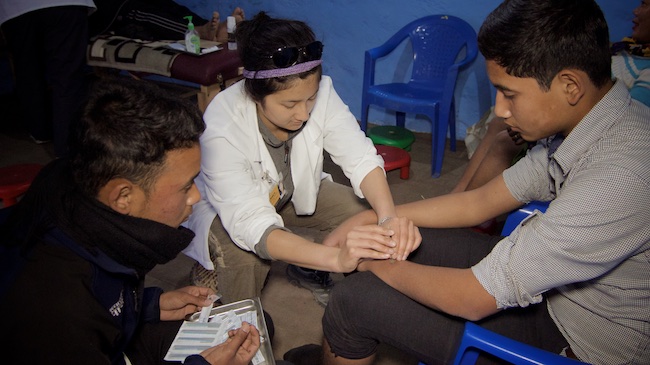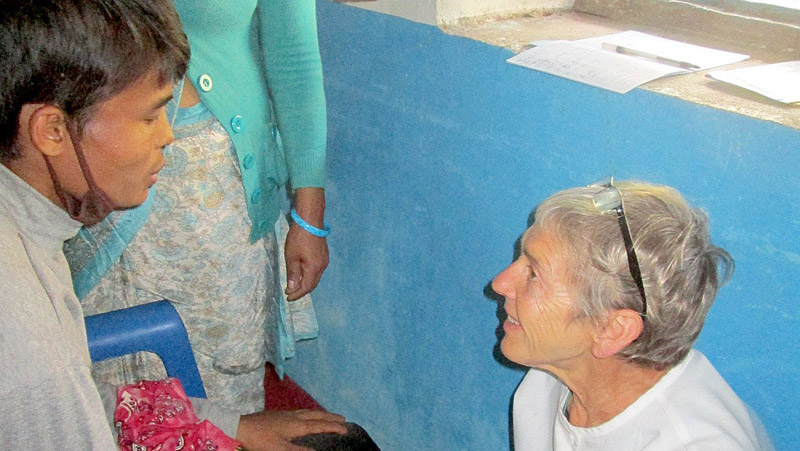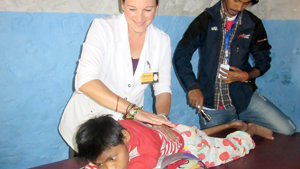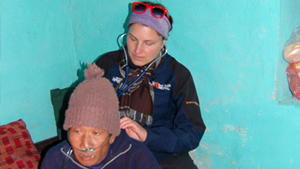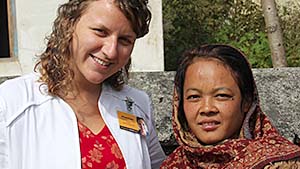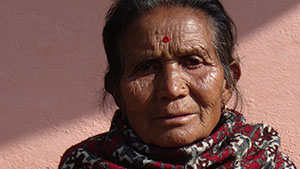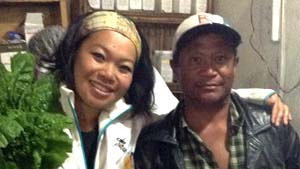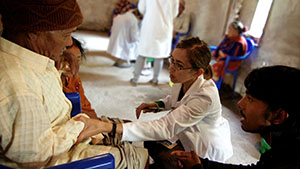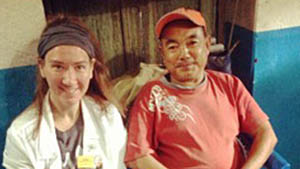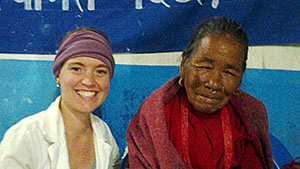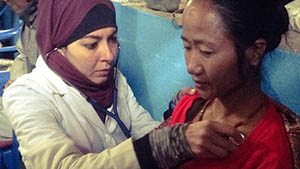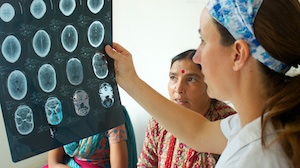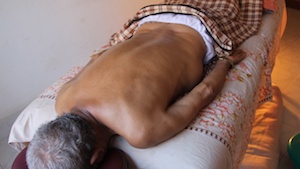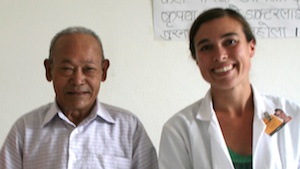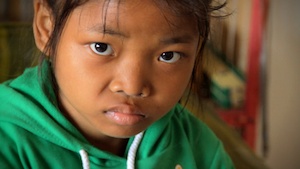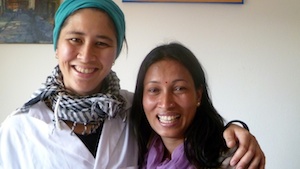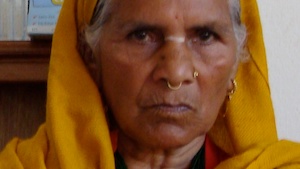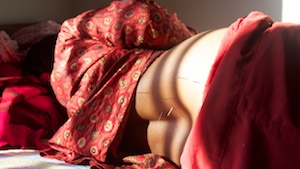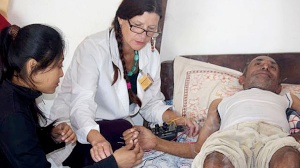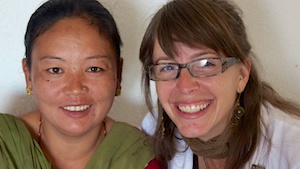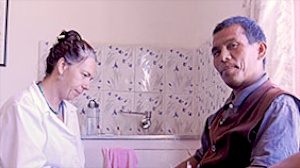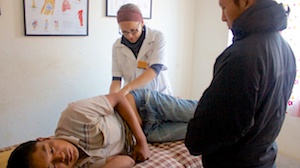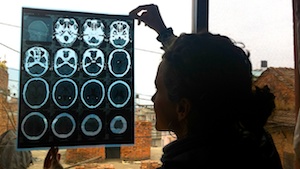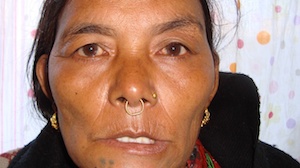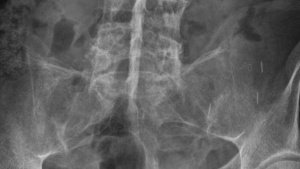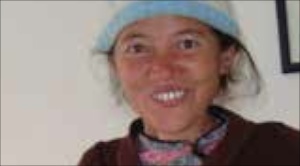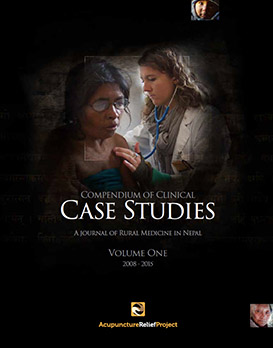Debbie Yu MS EAMP LAc
March 2015
OVERVIEW
58-year-old male presents with persistent contraction of 3rd, 4th and 5th fingers of right hand. He reports it began insidiously 3 years ago, and that it might be due to a leech bite from 25 years ago. After just 3 treatments using electro-acupuncture and manual therapy, passive and active range-of-motion have improved by 35%. To be limited in hand dexterity in this rural country is traumatic and debilitating. Acupuncture is a quick-acting and cost-effective alternative to surgery. This is especially important for this case where health care access and financial resources are limited.
Subjective
58-year-old male reports leech bites in right palm 25 years ago. Palmar thickening and finger contraction of 3rd, 4th and 5th digits began insidiously 3 years ago. He can flex the fingers, but cannot actively extend them past the point where they are locked. His 4th digit is the most severely affected, followed by the 5th, and then 3rd. There is no pain involved. No other areas of the body are affected.
Objective
Patient’s weight is proportional to height. His demeanor is jovial and he is engaging in conversation. With acupuncture, he is a little “needle-sensitive” in that he reflexes and jumps with each needle insertion, and has a difficult time relaxing, even after needles are inserted.
Upon first visit, he presents with unyielding contraction of 3rd, 4th and 5th digits in his right hand. There is puckering of the skin at the base of the 4th finger on the palmar surface that is about 8x5mm, and another at the base of the 5th finger that is about 5x2mm. No nodule is palpated.
The metacarpophalangeal joints (MCPJ) of the 3rd, 4th and 5th digits can actively extend 160°, 20° and 30° respectively. Passive extension at the MCP past this point is not possible.
The proximal and distal interphalangal (PIP and DIP) joints of the 4th finger are also contracted and unable to extend actively or passively. The PIP extends to 90°, and the DIP to 130°. Upon palpation of this finger, tendons are hypertonic and cordlike on both sides.
Pulse is wiry. Tongue is pale with a peeled coat.
Assessment
DX: Dupuytren’s contracture
This is a condition of the palmar fascia that causes progressive contraction of the fingers over the course of time. Etiology is unknown. Some doctors believe it to be autoimmune. Risk factors include men over age 50, smokers, diabetes and family history. Other correlations include alcohol abuse, HIV infection, epilepsy, trauma and manual labor with vibratory exposure. History and a physical intake are usually sufficient for diagnosis, but ultrasonography can illustrate thickening of the palmar fascia and cords, and presence of a nodule.
Physical assessment of the hand, and lack of pain, are the main indicators for the diagnosis of Dupuytren’s contractures. However, subjective information that would have been helpful, and relatively easy to gather, includes family history – Dupuytren’s contractures is usually hereditary, smoking history – smoking can constrict blood vessels and decrease flow to the extremities, alcohol intake – alcohol is a risk factor in Dupuytren’s contracture (as well as creates heat in the Liver in Chinese medicine) and occupation – most of the patients in this geographical area of Nepal are farmers who tend to overuse the flexors and lack exercises to work the extensors in the hands. Knowledge of past treatment or whether he had been given information concerning his condition would have been helpful to know in order to better assess the type and quality of care currently available in rural Nepal. Knowledge of activities that the contracture affects in his day-to-day life would be helpful to better assess his improvement in terms of quality-of-life.
Helpful objective measures that should have been taken include fasting blood glucose levels. Diabetes mellitus, as said above, is another risk factor for Dupuytren’s contractures. Nail changes and hypertension may indicate a more systemic Liver pathology in Chinese medicine, as described below.
DDX: Digital flexor tendinitis and tendosynovitis (trigger finger) also involve thickening of the palmar fascia and tendons. However, it is an inflammatory condition and usually involves pain with flexion, and snapping or popping of the finger with movement.
Scleroderma (systemic sclerosis) is an autoimmune disease that causes scar tissue formation in not only the skin, but also the internal organs leading to an array of signs and symptoms. It is often associated with Raynaud’s phenomenon with exaggerated symptoms when exposed to cold temperatures.
TCM DX: Tendon disease may be due to a Liver pathology. Signs and symptoms relating to the Liver include changes in vision, nails, irritability with anger, hypertension and headache. Patient also reports burning urination with negative urinalysis findings.
If no systemic Liver signs and symptoms are found, then a TCM channel pathology is most likely: Qi and blood stagnation in the hand Taiyang, hand Shaoyang, hand Jueyin and hand Shaoyin.
Initial Plan and Treatment
Begin with 10 acupuncture treatments, 2 to 3 times per week, before reassessing diagnosis and treatment plan.
Use acupuncture with electro-stimulation to break up and open fascia around the cords. Stimulate extensor digitorum and extensor carpi ulnaris with electro-acupuncture. Gua sha (a manual scraping technique with a ceramic spoon) after each acupuncture treatment to aid in breaking up the palmar fascia.
Electro-acupuncture from Ah Shi point in belly of extensor carpi ulnaris to an Ah Shi point in belly of extensor digitorum. Use 2/100Hz; a high 100hz frequency is used to stimulate muscle contraction. It is mixed with 2hz is to prevent accommodation and muscle fatigue.
Surround fibrous nodules of skin on palmar surface. Because patient is needle-sensitive, only 1 cord (2 leads) is used around the larger node. Use electro-stimulation at 2hz continuous microamperage to break the fascia and regenerate tissue.
In Chinese medicine, the tendons are the tissue associated with the liver. Therefore, systemically soothe the Liver qi to aid in healing and to prevent recurrence in the future. In addition, nourish Liver blood to nourish the tendons. Point combinations to take into consideration include LI4, LV3, LV8 and ST36.
Outcome
After 3 acupuncture treatments with local needling, the 4th and 5th digits improved about 35%. Degrees of active extension of 3rd, 4th and 5th fingers at the MCP were 160°, 90° and 90° respectively. The PIPJ and DIPJ of the 4th finger also improved, and can extend to 120 and 160 degrees respectively.
Prognosis
With electro-acupuncture and manual therapy, after 12 treatments, 60% improvement is expected. If patient massages palmar surface, stretches daily and continues to extend the “healthy” fingers of the same hand, in conjunction with another 12 acupuncture treatments, 80-100% improvement is expected.
Conclusion
Hand dexterity is significant to quality-of-life. Without such movement, life is debilitating. Acupuncture offers a safe, cost-effective and relatively quick-acting treatment for this patient’s Dupuytren’s contracture. Other options would have included costly surgery including further analgesic medication and potential complications, or no intervention and thus further progression of contraction. The treatment and plan are simply practical, and with continuity of care there is sufficient time to be able to educate about the pathology, to reduce risk factors in order to reduce odds of a relapse, and offer home exercises for the condition.












